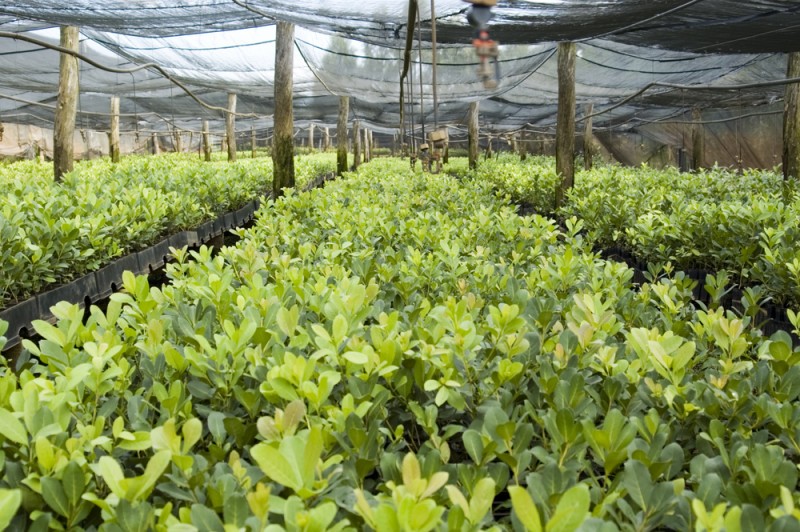How is Yerba Mate Processed? - The Yerba Mate Blog (original) (raw)
Although Yerba mate is generally appreciated through the southern regions of South America, the way it is processed and sold may vary from region to region. Now that we got that out of the way, let’s take a closer look at how yerba mate is processed, shall we?
After the yerba mate trees have reached 4-6 years old, they are ready to begin being harvested. At this point, the yerba mate trees are around 4-5 meters tall and of almost the same diameter, native yerba mate trees may reach up to 15 meters tall and 3-4 in diameter. The harvest usually occurs once every 2 years, in a rotating system, where only a part of the plantation is harvested at a time, providing a constant supply of leaves and giving the yerba mate trees around 2 years to replace the growth lost in the pruning. The native yerba mate trees may be harvested at any time of the year, but only every 3 or 4 years, unlike the cultivated yerba mate trees which are harvested at the end of winter.
Sapecado
The initial phase of the process consists in drying out the yerba shrub as a means of eliminating enzymes and slowing down the natural decomposition of the plant. This is a process known as Sapecado. Traditionally, this process was done manually with fire, but nowadays the old stoves have been completely replaced by automatic dehumidifiers working in conjunction with conveyor belts, which feed the fresh shrubs in and roll the dried ones out. If the heat that is used is excessive, the leaves will have a yellow color and would affect the final taste. The proper heat is very important. In this process the leaves lose 20% of their weight.
Secado
The Secado is the second step in the drying process. The Guarani Indians used two systems to do the secado. One was called carijó and the other was “barbacuá”. In carijó the heat of the fire goes directly to the leaves. In barbacuá the heat reaches the leaves through an indirect way through a tunnel under the earth. This is a smoking type process. Today they are dried both directly and indirectly using gas or wood and modern equipment.
Canchado
After running the dehydration system the yerba mate leaves are ready to be cut. Traditionally this was done by using machetes and and heavy wooden mills, but the process has since been automated as well. This is known as canchado. Canchada is also the name given to yerba mate that has just undergone this process. If you ever travel to South America, where mate is processed, you can try to brew mate with this type of yerba (as this type of yerba is generally not sold to the public). You will notice it has a very weak flavor as it has no powder (what indeed are finely ground leaves) which is the main ingredient to be dissolved in water.
Beneficio
What follows is one of the most important steps of processing yerba mate known as beneficio. It is during this time that the yerba mate is left to age for a minimum of six months. This is extremely important in order to get a top quality yerba. Organic and small farmers producers usually let this process last more than a year, sometimes even two, depending on market preference.
Milling
The final step is the milling. Through a sifting process done by specialised machinery the aged yerba is separated from its content of twigs, leaves and sticks or stems. The yerba is then blended in the proper proportions of each brand. Some may have more sticks, leaves or powder than others. Finding the “right” yerba for you will take some time.
In Brazil there is a norm to describe the composition of yerba mate. It implements the following standards:
Padrão Nacional 1 (PN 1) — at least 70% of leaves and maximum 30% of stem.
PN 2 — 60% and 40%, respectively
PN 3 — 50% and 50% respectively
The larger the amount of leaves, the stronger the mate will taste.
